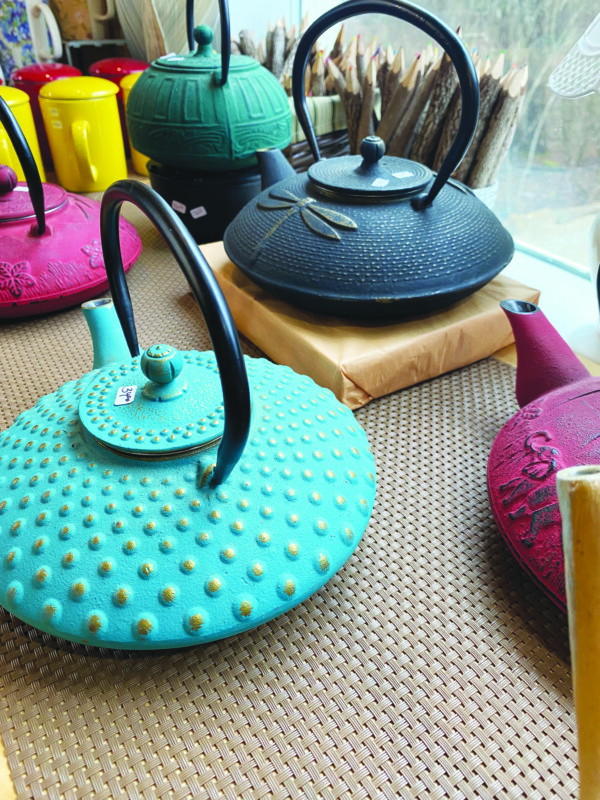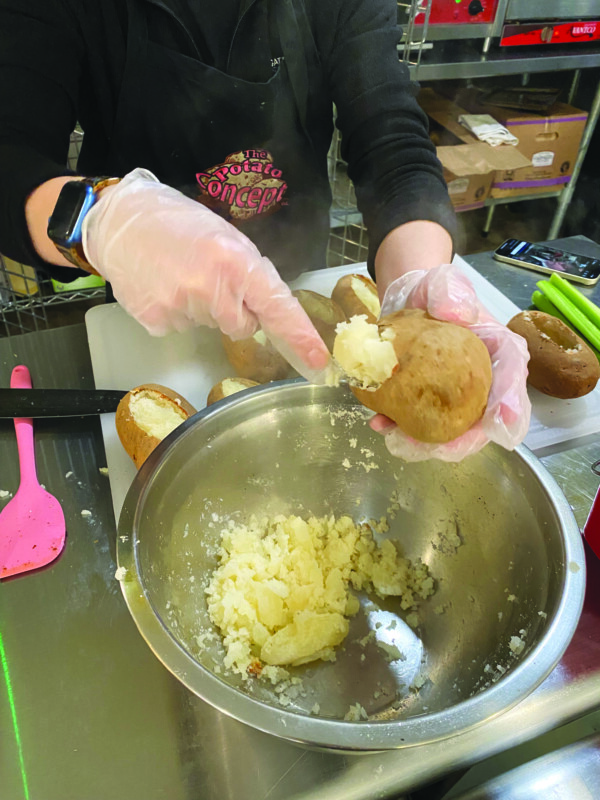Light, fruity varieties suit the season
By John Fladd
[email protected]
March and April are when the highest-quality teas — the “first flush” teas — are harvested.
“This is an exciting time of year for teas,” said Danielle Beaudette, the owner of The Cozy Tea Cart (104A Route 13 in Brookline, thecozyteacart.com, 249-9111).
Later in the year there will be other tea harvests across Asia — the second flush in late spring, the monsoon flush during the summer, and the autumnal flush in September and October — but the first flush teas are something special. Tea plants spend the winter months gathering nutrients and minerals, she said which give teas harvested at this time of year a pure and delicate flavor.
Spring is exciting in the tea world too, because the change in weather brings a change in tea enthusiasts’ drinking habits. During the winter, Beaudette said, tea drinkers tend to drink chais and spicier warming blends. That changes come springtime.
“This is the time of year when we start moving into iced teas,” she said. “People want something a little fruity with the warmer weather.” It’s a good time to try new teas and to pair them with food. To this end, her shop offers seasonal tasting flights of teas with foods that complement them.
Here are four of her pairings for the new spring tea season.
Pairing 1: A plain scone with English caramel black tea
This is a fairly substantial black tea that is tempered by the sweetness of caramel.
“The scone is slightly sweet,” Beaudette said, “but mostly savory, which balances out the sweetness of the caramel.” This tea is a blend of black teas from China and Assam in northeast India.
Pairing 2: A cinnamon chip muffin with Assam East Frisian black tea
“Cinnamon has a strong flavor,” Beaudette said, “and you need a tea that can stand up to it and not be overwhelmed.” She compares it to pairing a bold red wine with hearty food. “This tea blend uses golden leaf Assam, Darjeeling and Ceylon teas. Its infusion is brisk enough to handle the sweet and spicy flavors of the muffin.”
Pairing 3: Broccoli and cheddar quiche with Sencha Fukamushi green tea
“This is a Japanese green tea,” she said, explaining that there is a huge difference between the flavors of Japanese and Chinese green teas. “The Chinese tea has a nutty flavor, because it is pan-fired. The Japanese green teas are steamed, which gives them a more vegetal flavor.” Additionally, she says, some Japanese tea producers shade their tea bushes for a couple of months before harvesting the tea. The leaves have to work harder and thus produce more chlorophyll, which is another reason why it has a “greener” flavor. The vegetal qualities of this Japanese tea are well-balanced with the strong vegetal taste of the broccoli in the quiche.
Pairing 4: A “loaded” chocolate chip cookie with Vanilla Indulgence herbal tea
This tea is not actually made from tea leaves; it is made with rooibos, a South African plant with a lightly sweet, nutty flavor with woody notes. This plays off the coconut and walnuts in the cookie, and clears a tea-drinker’s palate to help distinguish between its two types of chocolate. The vanilla in the tea complements the butter and chocolate.
Regardless of which tea a customer chooses, Beaudette stresses the importance of brewing it correctly: “The lighter the color of a tea, the shorter amount of time you should steep it, and the lower the temperature of the water. Darker teas require longer steeping at a higher temperature.” If you use a teabag, she said, please don’t steep it for more than two minutes. “You’ll be happier with it,” she said.
Featured Photo: Photo by John Fladd.






